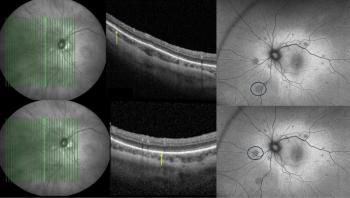
AAO 2024: Advancing medical education with AI, robotics, and diverse learning methods
In her Kelman Lecture presentation, Bonnie An Henderson, MD, highlights the importance of continuous education for clinicians.
At this year’s American Academy of Ophthalmology meeting, Bonnie An Henderson, MD, delivered the Kelman Lecture, where she explored innovative approaches to medical education in her talk titled Enhancing the Paradigm of ‘See One, Do One, Teach One’ With Technology. Henderson shared insights from her career in ophthalmic education, focusing on how teaching methods have evolved from textbooks and in-person lectures to digital resources like YouTube, simulators, and artificial intelligence and robotics. She highlighted the importance of blending traditional techniques with modern tools to create adaptable learning environments. Henderson emphasised that while online tutorials are valuable, hands-on experience remains essential for building skills in professions like ophthalmology. Her lecture offered a look at the journey of educational methods and a glimpse into the future of training for the next generation of clinicians.
Henderson, who is a clinical professor at Tufts University School of Medicine in Boston, Massachusetts, shares some of the key takeaways with the Eye Care Network.
Video Transcript:
Editor’s note: The below transcript has been lightly edited for clarity.
Bonnie An Henderson, MD:
I’m so thrilled to be participating in the Academy and especially giving the Kelman Lecture. It’s such an honor. I’m so thrilled to be doing it. So grateful. Thank you for asking about it. As you said, the title really is about education. I’ve spent my career really focusing on education, whether it’s actually delivering education, or really trying to discover ways to make it more efficient and more effective. And I wanted to really focus my lecture on how the evolution of education has changed, even in my career. And I’m taking it all the way from when before the internet was created, which is really not that long ago. When I went through residency, we didn’t have all of these special toys and tools that we have, like YouTube. So I’m really describing the educational journey from when we used to teach by textbooks and lectures, and then what labs were created, and then simulators were created and and ultimately, AI and robotics.
I’m going to take the audience through the whole evolution, and really give a little bit of a preview of what I think education will be as we move forward.
What advice would you give a resident today?
I think what we’ve learned is that you actually need different modes of education, and it’s really fascinating that people learn in different ways, and every individual is so different. What may work for one person may be really different than for another person. I think it’s really good to really remember all the traditional ways to learn as well as the new ways. People are so used to seeing really short clips of videos. I think a lot of people turn to channels like YouTube to find out how to do a surgical procedure, but it’s really important to remember that it’s not sufficient just to watch a video. People still need the hands-on, whether it’s in a wet lab with an animal eye or a synthetic eye or a simulator, those skills, the hand-eye coordination, those physical skills, are still really important. I think it’s important to remember the old-fashioned ways as well as the new ways that people are learning. I think with AI, I mean, it’s going to be a remarkable journey, the things that we’re learning nowadays, the speed at which programs can actually accumulate all the knowledge very quickly. And, you know, really find it in a very bite-sized way that we can actually focus on what’s important is going to be really fascinating to watch as the educational evolution changes again in our lifetime. I mean, what will happen in 20 or 30, years from now? It’ll be phenomenal compared to what we did 20 or 30, years ago.
What would be a key takeaway for all clinicians in terms of what they can put in the practice when they return from the Academy?
The key takeaway I would give is that there are so many ways to continue learning now, whether it’s online, whether it’s in person meetings. I think it’s really crucial to keep educating someone, to keep learning about the new devices, the new techniques, the new medications. All of these things are rapidly changing every six months, and it’s really, really important for each clinician to make sure that they’re up to speed on what’s been changing.
Newsletter
Get the essential updates shaping the future of pharma manufacturing and compliance—subscribe today to Pharmaceutical Technology and never miss a breakthrough.













































